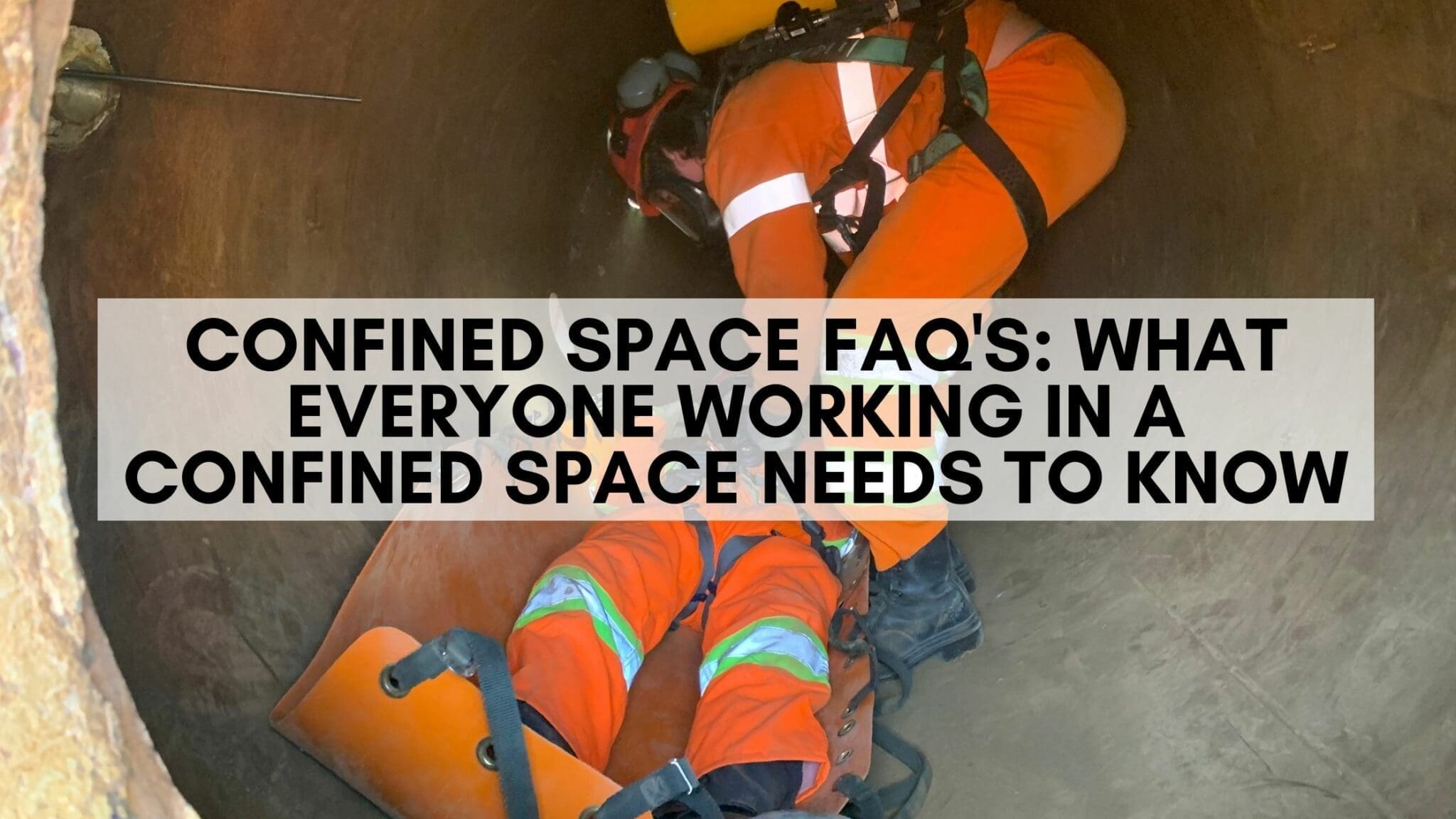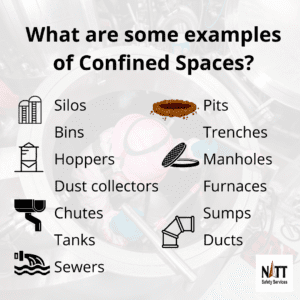Confined Space FAQ’s: What Everyone Working in a Confined Space Needs to Know

When working in confined spaces, there is important information to understand, and training to completed. The article below shares some key Confined Space FAQ’s often asked about working in Confined Spaces.
Confined Space FAQ’s
What is a Confined Space?
The following definition is referenced from Occupational Health and Safety Act and O. Reg. 632/05.
Confined Space:
– “confined space” means a fully or partially enclosed space,
◦ (a)that is not both designed and constructed for continuous human occupancy, and
◦ (b)in which atmospheric hazards may occur because of its construction, location or contents or because of work that is done in it.
What are some examples of Confined Spaces?
– Silos
– Bins
– Hoppers
– Dust collectors
– Tanks
– Sumps
– Sewers
– Pits
– Trenches
– Manholes
– Furnaces
– Chutes
– Ducts

How do you Identify and Classify Confined Spaces?
◦ Some spaces do not meet all 3 criteria for confined spaces, and may be deemed a “Restricted Space”
◦ If hazardous physical or chemical agents are introduced into the space as part of ongoing/related work, the space must then be designated as a ‘Confined Space’.
◦ A restricted space refers, in part, to a “space from which the egress of a worker is restricted, limited, or impeded”. A “restricted space” may also be a confined space, thus, an evaluation of the space may determine that the area is either a confined space, a restricted space, or both.
What are the Legislative Requirements with Regards to Confined Spaces?
If a workplace includes a confined space that workers may enter to perform work, the employer shall ensure that a written program for the confined space is developed and maintained in accordance with this Regulation before a worker enters the confined space.
(2) A program described in subsection (1) may apply to one or more confined spaces.
(3) In the case of a workplace that is not a project, the program described in subsection (1) shall be developed and maintained in consultation with the joint health and safety committee or the health and safety representative, if any.
(4) A program described in subsection (1) shall be adequate and shall provide for,
(a) a method for recognizing each confined space to which the program applies;
(b) a method for assessing the hazards to which workers may be exposed
(c) a method for the development of one or more plans
(d) a method for the training of workers, and;
(e) an entry permit system that sets out the measures and procedures to be followed when work is to be performed in a confined space to which the program applies.
Assessment:
- (1) Before any worker enters a confined space, the employer shall ensure that an adequate assessment of the hazards related to the confined space has been carried out.
(2) The assessment shall be recorded in writing and shall consider, with respect to each confined space,
(a)the hazards that may exist due to the design, construction, location, use or contents of the confined space; and
(b)the hazards that may develop while work is done inside the confined space.
(3) The record of the assessment may be incorporated into an entry permit under section 10.
Plan: - (1) Before any worker enters a confined space, the employer shall ensure that an
adequate written plan, including procedures for the control of hazards identified in the
assessment, has been developed and implemented by a competent person for the
confined space.
(2) The plan shall contain provisions for,
(a) the duties of workers;
(b) co-ordination in accordance with section 4, if applicable;
(c) on-site rescue procedures, in accordance with section 11;
(d) rescue equipment and methods of communication, in accordance with section 12;
(e) personal protective equipment, clothing and devices, in accordance with section 13;
(f) isolation of energy and control of materials movement, in accordance with section 14;
(g) attendants, in accordance with section 15;
(h) adequate means for entering and exiting, in accordance with section 16;
(i) atmospheric testing, in accordance with section 18;
(j) adequate procedures for working in the presence of explosive or flammable substances, in
accordance with section 19; and
(k) ventilation and purging, in accordance with section 20.
General Training
(1) Every worker who enters a confined space or who performs related work shall be given adequate training for safe work practices for working in confined spaces and for performing related work, including training in the recognition of hazards associated with confined spaces.
(2) The employer shall appoint a person with adequate knowledge, training and experience to conduct the training.
Specific Training
9.1 (2) The employer shall ensure that every worker who enters a confined space or who performs related work receives adequate training to perform the work safely, in accordance with the relevant plan.
(a) the recognition of hazards associated with confined spaces; and
(b) safe work practices for working in confined spaces and performing related work
9.1 (4) The employer shall maintain up to date written records showing who provided and who received training under this section and the date when it was provided.
There are many more legislative requirements which are covered in the NATT Safety Services Confined Space training.
Why Do Confined Space Accidents happen?
Research suggests some of the following can be contributing factors:
– Improper planning
– Inexperience
– Complacency
– Untrained Individuals
– Short cuts
– Improper or defective tools/equipment
– Incomplete locking and tagging
This is only a start to cover all the Confined Space FAQ’s. There is so much more information included in our Confined Space training programs and confined space FAQ’s covered. If you have other confined space FAQ’s please contact us today.
Confined Space Rescue and Confined Space Training Ontario
For more information on the NATT Safety Services Confined Space Rescue Services and Confined Space Training in Ontario, contact NATT Safety Services today. Check out the NATT Safety Services Confined Space Simulator training.
